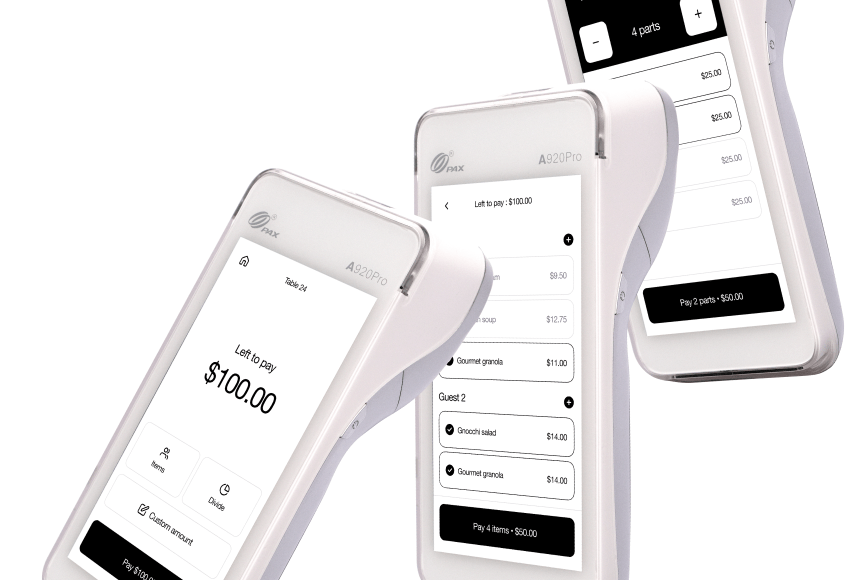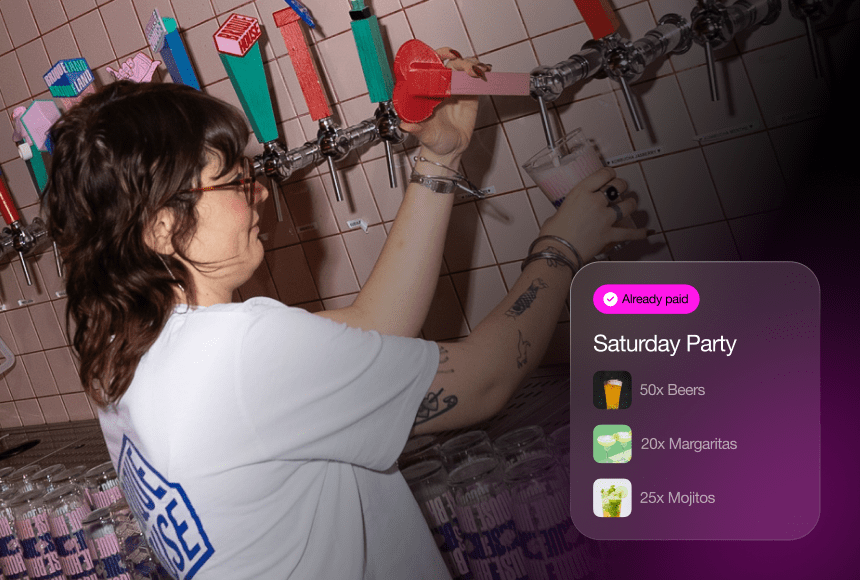
From Online Reviews to Loyal Diners: Mastering the Digital Feedback Loop
Why Feedback Matters More Than Ever
When you talk to restaurant owners across the United States, you’ll hear one recurring theme: feedback is essential for survival. Today, most diners share their experiences online—through Google reviews, Yelp, social media, and other platforms. A single glowing review on Google can bring a surge of new guests, while one unsatisfactory rating might send potential diners straight to the competition. This constant stream of customer feedback holds immense power. And if managed well, it transforms from a one-time data point into a cycle that drives repeated sales, consistent improvements, and stronger customer loyalty.
In the age of digital payments and immediate online commentary, getting feedback is no longer optional; it’s part of running a modern dining establishment. Your patrons are talking about you—whether you join the conversation or not. That’s why setting up a “digital feedback loop” goes beyond casually glancing at reviews. Instead, it allows you to actively collect, analyze, and respond to comments, turning them into a reliable engine for repeat visits. By establishing clear mechanisms for gathering insights, addressing concerns, and showcasing improvements, you can flip potentially negative commentary into a cornerstone for ongoing success.
Defining a Digital Feedback Loop
A digital feedback loop is a continuous cycle of collecting customer feedback, analyzing the insights, refining the guest experience, and measuring the impact. Imagine a circle that starts with a diner finishing their meal and scanning a QR code to pay. This same tool can invite them to rate their experience or leave a review. Then, based on those responses—whether they’re fabulous or a bit tough to read—you make operational changes and track subsequent improvements to see how they affect future feedback. The cycle goes on. The better you get at refining each step, the stronger your restaurant’s reputation becomes, leading to more repeat business and customer loyalty.
Many owners think that once a customer leaves a review, the job is done. In reality, that’s only the beginning. The true magic is in collecting data from those reviews and using it to create better food, service, ambiance, and overall satisfaction for your diners. In other words, reviews—positive or negative—become a springboard for transformation and growth. Think of it like fine-tuning a signature dish: you tweak the seasoning, reevaluate the plating, gather your guests’ reactions, and then adjust again. Each cycle makes your offering better.
The Benefits of Going Digital
Why “digital” feedback loops? Couldn’t you just rely on word-of-mouth or comment cards? The restaurant industry has always been people-centric, and personal interactions matter. However, the online world offers advantages that amplify feedback at scale and in real time:
- Speed and Efficiency: Digital platforms allow you to capture insights from hundreds of guests in minutes, rather than a few paper comment cards each day.
- Detailed Data: Online reviews often include star ratings, photos, and specific narratives about your service. This breadth of information is invaluable when deciding how to improve or pivot your offering.
- An Extended Reach: Feedback doesn’t just come from your regulars. It includes visitors, travelers, or first-timers who happen upon you through search engines or review sites. That broad feedback pool paints the most realistic picture of where you stand.
- Transparency: Everyone can see your reviews. In fact, according to BrightLocal, around 77% of consumers “always” or “regularly” read online reviews when looking for local businesses, including restaurants. Transparency means you’re held accountable, but it also showcases positive changes and improvements.
Having this accessibility, efficiency, and visibility is a game-changer for restaurants—both large and small. You can capture honest thoughts from the people who matter most: the guests who walk through your doors every day.
QR Codes: The Gateway to Instant Feedback
QR codes have quickly become a mainstay in many American restaurants, especially since 2020. Instead of asking customers to type out a complex URL or dig up your business name online, you can place a simple QR code on the table, receipt, or check presenter. Scanning the code might lead diners straight to your payment platform, review form, or tip suggestion screen—some solutions, like sunday, streamline all these steps into a single, frictionless flow.
Through such technology, you can offer a seamless payment process while also encouraging guests to leave a quick rating or feedback. These instant reviews are often the most authentic because the experience is fresh in the customer’s mind. Moreover, when it takes only a few taps to complete, patrons are more inclined to share their thoughts. This mixture of convenience and immediacy becomes a powerful force behind the digital feedback loop.
To see the benefits in real life, consider a hypothetical example: Chef Maria’s Taco Spot, an independent eatery in Austin. Maria started putting QR codes on her tables for contactless payments and found that over half of her guests began leaving short comments or star ratings. Many of them praised the taste of her handcrafted salsa, but they also mentioned that the seating area felt cramped during peak hours. Armed with this info, Maria rearranged the seating layout and adapted her waitlist system to shorten lines. Her subsequent round of reviews highlighted how the customer flow improved, turning occasional taco fans into loyal repeat patrons.
Turning Reviews into Actionable Insights
Reading reviews is one thing; doing something about them is another. If a guest complains about slow service, investigate whether staffing patterns, table turnover rates, or ordering bottlenecks are responsible. If diners rave about your homemade bread, include more freshly baked items in the menu and highlight them in your marketing materials. The key is to look for patterns rather than stressing over individual glances of negativity.
Here’s a straightforward approach for restaurants looking to glean insights from reviews:
- Track Key Metrics: Look at average star ratings over time, frequency of common complaints, and the ratio of positive to negative feedback.
- Identify Patterns: Are multiple guests mentioning the same issues—like long wait times on Fridays or inconsistent portion sizes? Spotting these trends will help determine what demands your immediate attention.
- Prioritize Actions: You can’t fix everything at once, so tackle the items that will yield the biggest improvements. For instance, addressing the top three recurring complaints might improve the majority of your guest experiences.
- Implement Changes and Monitor: After making any change—a new staff training program or a menu revamp—keep an eye on your reviews to see if sentiment trends upward.
By continually analyzing, adjusting, and re-measuring, you create an endless loop of improvement. Each review fuels the next change, and each change sparks the next positive review, reinforcing your brand in the marketplace.
The Role of Personal Engagement
While fancy dashboards and analytics are helpful, don’t forget the human element. Many patrons choose where to dine based just as much on how they feel as on the food itself. When diners sense genuine care—through personal responses to reviews or a manager personally greeting them—it fosters loyalty. If someone leaves a scathing remark about cold fries, a polite, empathetic response from the management can earn a second chance. The same goes for praising a 5-star post, showing your appreciation that they took the time to share kind words.
Larger restaurant groups may have marketing teams or designated professionals to monitor and respond to every review. For smaller establishments, the owner or general manager might handle the task. Either way, consistency is the key. Even something as simple as “Thank you for your feedback; we’ll do our best to address the issue” goes a long way. If you want to become a neighborhood gem, treat your customers as guests, not just transactions. That personal touch can mean the difference between a one-time visitor and a lifelong regular.
Beyond review platforms, consider your email newsletters or social media channels as platforms to keep guests in the loop. Share stories of recent changes (“We heard your comments about the seating, and guess what—we remodeled!”) or highlight staff members who go above and beyond. People love hearing about positive updates, and seeing that their opinions truly sparked these decisions can strengthen their bond to your restaurant.
Leveraging Technology for Ongoing Improvement
Restaurant technology is evolving rapidly. Now, you can automate feedback requests through text messages, email, or integrated payment solutions. Some platforms bundle table-side ordering, digital payments, and automated review invitations into a single, unified system. The goal: remove friction for diners and staff alike, while streamlining essential business intelligence for you.
As you explore these tools, keep in mind the following considerations:
- Simplicity: A platform that is complex to use might be abandoned by your team or diners. Look for user-friendly solutions that integrate with existing systems like your point-of-sale or reservation app.
- Customizability: Being able to tailor feedback prompts to reflect your restaurant’s style—without losing clarity—is a plus. Personalization fosters higher engagement.
- Actionable Reporting: Data is only helpful if you can quickly interpret it. Focus on solutions that generate easy-to-consume dashboards, alerts, or analytics reports.
- Scalability: As your restaurant grows, you may expand to more locations or increase your seating. Make sure whatever technology you choose can grow with you.
Take sunday, for instance. By placing a QR code on your tables, your customers can settle the check without waiting for a physical bill. Right after they pay, they could be prompted to leave a tip, leave a rating, or post a Google review. This is the perfect moment to capture honest opinions, and it can be done in a matter of seconds. Analyzing this real-time data is a breeze, allowing you to respond quickly, whether that means addressing a complaint or celebrating a job well done.
Best Practices for Maintaining the Feedback Loop
To ensure your digital feedback loop stays relevant and effective, treat it like an evolving process. Below are guidelines that can keep your system running at full steam:
- Set a Consistent Review Schedule: Whether you choose a daily or weekly schedule, make sure someone is in charge of reading and categorizing reviews. Timely responses show your guests you care.
- Involve Your Team: Make sure hosts, servers, and kitchen staff understand the importance of feedback. During team meetings, discuss positive and negative highlights to encourage collective improvement.
- Be Transparent: When you address common complaints, consider posting about the solutions on your social media or in-store signage. This level of openness builds consumer trust.
- Reward Loyal Customers: If you notice certain regulars who often leave feedback, think about recognizing them with unique perks like a complimentary appetizer or dessert. This small gesture can turn them into brand ambassadors.
- Revisit and Refine: Every quarter, evaluate whether your digital feedback loop is meeting your evolving goals. If it’s not, adapt. Keep an eye on new technologies that might elevate your approach further.
Remember, this is a dynamic process. Tastes change, staff turns over, and new technologies arise. By keeping your finger on the pulse of feedback, you stay ahead of the curve and consistently deliver memorable experiences.
Case Study: Chef Maria’s Transformation
Let’s circle back to Chef Maria’s Taco Spot for an illustrative case study. She was an early adopter of QR code payments, driven by the desire to speed up table turnover and reduce staff workload. Once she enabled guests to pay using QR codes, she took it a step further by linking the payment interface to a short review form. Within two weeks, she gathered 350 unique data points on everything from her restroom maintenance to the spiciness of her signature salsa verde.
Here’s how Maria turned those data points into consistent traffic and rave reviews:
- Invested in Staff Training: A repeated complaint was that new servers weren’t familiar with the menu. Maria implemented a structured menu-tasting day each month for the entire team. Next time diners had a question about vegetarian tacos or allergen information, the staff was prepared.
- Updated the Décor and Seating: Several guests said the décor felt dated. Maria used the feedback to repaint the dining room in brighter colors and brought in new chairs that were both stylish and comfortable.
- Promoted Signature Items: Thanks to repeated praise for her homemade tortillas, Maria created a social media series called “Tortilla Tuesday,” which brought in 20% more traffic on a day that used to be quiet.
- Acknowledged Positive Feedback Publicly: Maria responded to five-star reviews online, thanking guests personally. She also reposted some of the best quotes on her Instagram feed, always giving credit to the original reviewers. Talking about good reviews encouraged even more people to post online.
Six months later, Chef Maria’s Taco Spot saw a 30% increase in revenue, and her online rating jumped to 4.8 stars—positions that might have been out of reach without focusing on an intentional feedback loop. She built the habit of regularly analyzing digital comments, implementing real changes, and looping back to her guests. The result? A busy dining room and a waitlist on most evenings.
How This Feedback Loop Boosts Repeat Visits
Attracting one-time customers is great, but the lifeblood of a thriving restaurant is repeat business. Digital feedback loops enhance loyalty by:
- Building Trust: Public reviews bundled with personal, timely responses show customers you care. When people see that you’re attentive, they’ll think: “This place really listens to me.”
- Proving Adaptability: Addressing issues that come up repeatedly demonstrates that you value your customers’ input enough to make changes. This responsiveness keeps guests curious to see what new improvements you’ve rolled out next time they visit.
- Providing Personalized Experiences: The more data you gather, the better you know your guests. By identifying what resonates—whether that’s a dessert cart or a special brunch menu—you can tailor offerings that bring people back.
- Nurturing a Community Feeling: Restaurants aren’t just about food; they’re communal spaces. When people notice their feedback shaping decisions, they feel invested in your success and committed to returning.
Building trust and community is crucial in the saturated restaurant market. By fostering open and direct conversation with your guests, you encourage them to come back not just for a meal, but for an experience they’ve actively helped shape.
Next Steps in Digital Feedback Mastery
Ready to accelerate your feedback strategy? Consider these action steps:
- Audit Your Online Presence: Search your restaurant’s name on multiple platforms (Google, Yelp, social media) and see what top reviews say. Identify patterns in recurring feedback.
- Choose a Feedback Collection Method: Whether it’s a dedicated QR code system, an email follow-up, or text messages, ensure it’s user-friendly. Test it yourself and consider how you’d feel if you were the customer.
- Train Your Team: Staff buy-in matters. Let them know why these changes are beneficial, guiding them to encourage customers to provide feedback. Share success stories. If your staff sees how feedback translates into real improvements, they’ll be motivated to keep the momentum going.
- Monitor Went-Well and Needs-Work Areas: Collect data on your top accolades and top pain points. Celebrate the good as you tackle the not-so-good. Let your entire staff see both sets of data so they feel part of a united mission.
- Engage in Continuous Improvement: Think of your feedback loop as a living recipe. You test, taste, adjust, and test again. Pay attention to metrics like average check size, table turnover times, or online star ratings to see which areas are blossoming with your efforts.
Whether you’re a small diner, a trendy bistro, or a high-end steakhouse, each piece of feedback you collect and use to improve becomes a stepping stone to building a restaurant that stands the test of time.
FAQ: Common Questions about Digital Feedback Loops
What if I only get a handful of reviews each week?
The volume of reviews can vary, especially for smaller or newer restaurants. Even a small number of reviews can yield significant insights if you track recurring themes. Plus, you can encourage more reviews by making the process quick and accessible, such as offering a simple QR code for immediate feedback.
How do I handle negative reviews without hurting my reputation?
Respond politely, acknowledge the issue, and offer a sincere attempt to fix it. Future visitors can see your response, so an empathetic tone helps showcase your commitment to customer satisfaction. Offer to continue the conversation offline if the complaint requires deeper resolution.
Isn’t it too time-consuming to monitor every platform?
Many scalable solutions let you aggregate comments from multiple sites. Also, designate specific employees to check feedback at set times each day. A systematic routine prevents overwhelming your team. If you have limited resources, start with Google Reviews, as it’s the most visible platform for local search results.
Do I need to invest in specialized software?
Not necessarily. Some restaurants manage digital feedback loops using free tools and platforms. However, specialized software—like the kind offered by sunday—simplifies payment and feedback collection in one system, saving you time and ensuring higher completion rates for reviews.
How soon should I respond to reviews?
The quicker, the better. If possible, reply within 24 to 48 hours. Prompt responses show you value your customers’ time and concerns. This timely engagement often leads to better rapport and can even convert a dissatisfied customer into a fan.
Can I integrate these ideas if my restaurant is part of a larger chain?
Absolutely. Multi-location operations benefit even more from data consistency. We recommend standardizing feedback collection practices across all branches so management can compare performance and identify unique issues at each location.
What measurable metrics should I track?
In addition to star ratings, look at the frequency of certain keywords in reviews, changes in average ticket size, the ratio of positive to negative feedback, and how many visitors use your QR codes. These data points help paint a more complete picture of your business’s trajectory.
How do I encourage more customers to leave reviews?
Ask politely and make it easy. A short message on your digital payment page—“We value your opinion! Please leave a quick review.”—can be very effective. A server might also mention it kindly when dropping off the check. If guests know feedback is welcomed and quick to do, they’re more likely to engage.
Elevate Your Restaurant with a Proactive Feedback Loop
Embracing a digital feedback loop isn’t just about collecting star ratings. It’s about listening, evolving, and showcasing that evolution to your customers. When you tie genuine human interaction with smart technology—like QR code payments and automated follow-up prompts—you create a win-win scenario: guests get an easier way to communicate, and you gain critical insights to refine your craft. Over time, these small but steady improvements add up, boosting your reputation and ensuring your restaurant stays a favorite in your community.
Whether you’re running a cozy cafe or a high-volume establishment, investing in how you gather and act on customer feedback pays dividends. Each review, each response, and each tangible change strengthens the bond between you and your diners. That’s the heart of hospitality—and the key to turning one-time visits into enduring loyalty.
Find out more today
Drop us your details below and we’ll reach out within the next 24h
Stay on top of your online reputation.
Say goodbye to bad ratings and hello to 5*s. Get to know your customers with our integrated rating & review feature, which allows you to get more reviews, better ratings and more visibility online.



